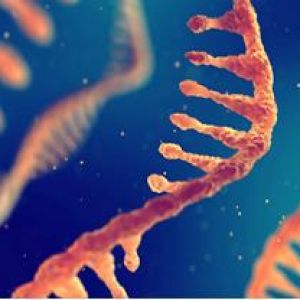Everything You Need to Know About ThalassemiaPosted by Candy Swift on March 3rd, 2022 Thalassemia is one of the most common inherited diseases worldwide and is considered a major public health concern in many countries, affecting approximately 4.4 out of every 10,000 live births throughout the world.Thalassemia is an inherited blood illness characterized by the production of an abnormal type of hemoglobin by the body. Hemoglobin is the oxygen-carrying protein molecule in red blood cells, the disorder of which can cause anemia, a condition that the body\'s supply of normal, healthy red blood cells that is insufficient. This article will introduce symptoms, causes, diagnosis and treatment options of thalassemia. l Symptoms of Thalassemia Thalassemia is a disorder of hemoglobin that causes hemolytic anemia. Hemolysis is a term to describe the destruction of red blood cells. In adults, hemoglobin is made of four chains—two alpha chains and two beta chains. In thalassemia one cannot make either alpha or beta chains in adequate amounts, making bone marrow unable to make red blood cells properly. The red blood cells are also destroyed. The symptoms of thalassemia can vary in individuals, and not everyone shows visible symptoms. Signs of this disorder might show up later in childhood or adolescence. The most common ones include bone deformities (especially in the face), excessive tiredness and fatigue, delayed growth and development, dark urine, yellow or pale skin. l Causes of Thalassemia Thalassemia occurs when there’s an abnormality or mutation in one of the genes involved in hemoglobin production. This genetic abnormality can be inherited from one\'s parents. If just one of his parents is a thalassemia carrier, he may have thalassemia minor, a mild form of the illness. If this happens, the person will most likely not show symptoms. If both parents carry thalassemia genes, he has a higher probability of acquiring the disease with more severe symptoms. l Diagnosis and Treatments for Thalassemia Thalassemia can be diagnosed mainly through two methods. The first is blood tests. A full blood test is used to measure the amount of hemoglobin and the different kinds of blood cells in a blood sample, and a hemoglobin test measures the types of hemoglobin present. Then is genetic testing. The treatment for thalassemia depends on the type and severity of the disease involved. Doctors will give a course of treatment that will work best for the particular case. Commonly used treatments are medications and supplements, blood transfusions, bone marrow transplants, and possible surgery. Iron chelation is also a common medication in treating thalassemia. Patients who receive chronic blood transfusions acquire too much iron from the blood, and they also absorb greater amounts of blood from their diet, causing deposited iron in the liver, heart, and pancreas. And iron chelators can help their bodies get rid of excess iron. Thalassemia is also reported to be associated with the production of natural autoantibodies (NAA). Creative Biolabs, a biotech company focusing on NAA development services, is ready to facilitate NAA-associated thalassemia diagnosis and therapeutics development, covering common targets such as anti-ATP synthase, anti-alloantibody K, and anti-alloantibody D. Like it? Share it!More by this author |


